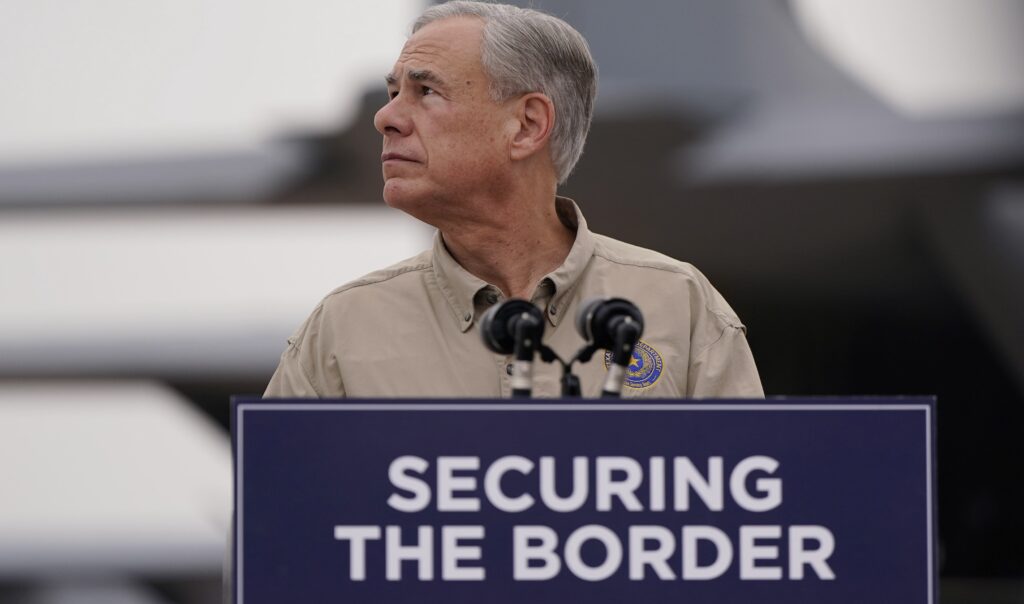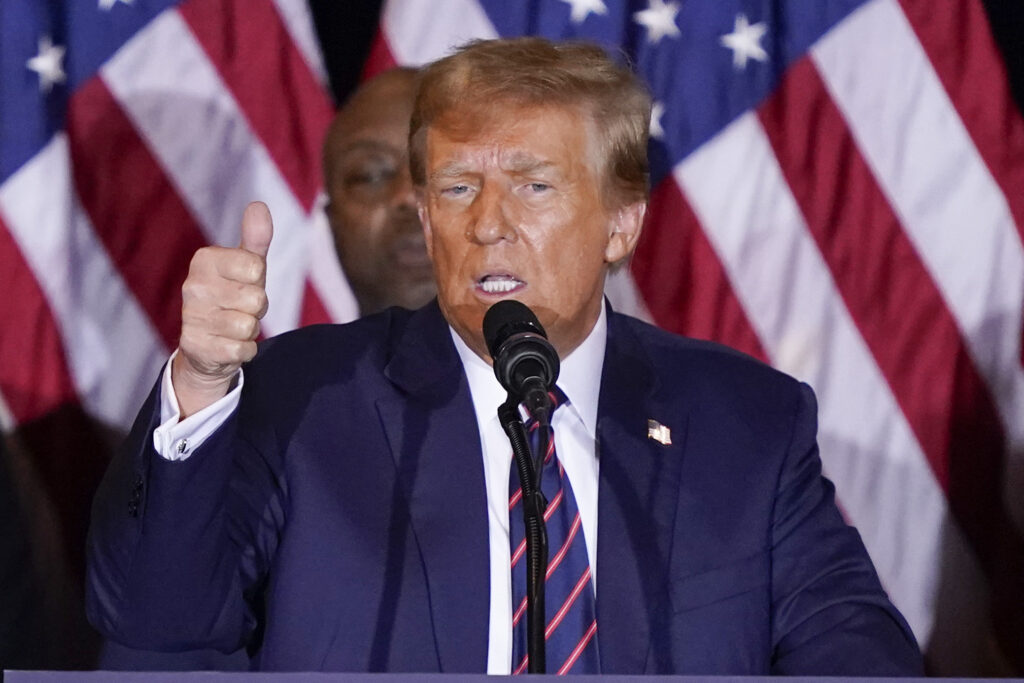
Texas authorities’ decision to continue laying wire at the southern border despite a narrow Supreme Court order siding with the Biden administration’s removal effort does not defy the high court, legal experts say.
The Supreme Court dealt a blow this week to Gov. Greg Abbott‘s (R-TX) efforts to block thousands of immigrants from illegally crossing the southern border, issuing a favorable order to President Joe Biden that allows federal Border Patrol agents to remove concertina wire fences intended to deter migrants. The Texas National Guard has laid out even more wire near the border city of Eagle Pass as two dozen states now show support for the governor’s response.
Abbott’s vows to continue laying wire prompted politicians and media pundits to claim he is using Texas National Guard personnel to “defy” a Supreme Court ruling.
“Abbott is using the Texas Guard to defy a Supreme Court ruling,” former Democratic gubernatorial candidate Beto O’Rourke posted on X.
Even members of Abbott’s party similarly characterized Texas’s actions as defiance of the justices, including Rep. Chip Roy (R-TX), who, in an X post, called on state officials to “ignore” the Supreme Court order.
“This opinion is unconscionable and Texas should ignore it on behalf of the [Border Patrol] agents who will be put in a worse position by the opinion and the Biden administration’s policies,” Roy said.
Attorney General Ken Paxton, who sued the Biden administration in October 2023 over federal agents cutting the wire, said his state has no intention to cease laying wire in response to the order.
Despite similar claims from detractors and supporters of Abbott’s efforts to continue fortifying the border, many legal experts say there is nothing the governor is doing that constitutes ignoring or defying the order by the Supreme Court.
How does laying wire not defy the Supreme Court?
The high court’s temporary order allows the Department of Homeland Security to continue removing the wire, which federal officials argued “made it harder for front-line personnel to do their jobs and to apply consequences under the law,” according to the agency’s Monday evening statement.
Monday’s ruling does not end the dispute. It simply means that while the case moves forward, the injunction that the U.S. Court of Appeals for the 5th Circuit entered in December, which blocked federal officials from removing the razor wire, will remain on hold.
“The Supreme Court didn’t order Texas to do something or order Texas not to do something, so really there’s no Supreme Court orders being ignored,” South Texas College of Law professor Josh Blackman told the Washington Examiner.
“What’s going to happen now is lower courts will have to figure out exactly what Texas can and cannot do,” Blackman added.
Steve Vladeck, a law professor at the University of Texas School of Law, agreed that the Supreme Court issued no order against Texas for the governor to defy.
“It also, I think, testifies to how little those politicians understand what this case is actually about, because the actual ruling the Supreme Court handed down on Monday doesn’t require Governor Abbott to do anything,” Vladeck told the Texas Standard, saying the order merely “clears away the possible legal consequences” if Border Patrol agents continue to remove the wire.
While there’s ample agreement on this matter among experts, Case Western Reserve University law professor Jonathan Entin told the Washington Examiner that Abbott’s response is still walking a thin legal line.
Entin said Abbott and Paxton, both being lawyers, “should know better” than to try to reinstall the border wire, given that the order provides federal Border Patrol officers authority to remove it, calling it “irresponsible.”
“It’s perfectly obvious what the Supreme Court was saying is that Texas is not supposed to block the federal government from cutting that wire,” Entin said. “And whether it is literally in defiance of the court or not, the idea that you’re going to come right back in and replace the wire that the federal government has been allowed to cut seems to me to be irresponsible.”

Why are Democrats telling Biden to federalize the Texas National Guard?
A growing number of left-wing figures are calling upon Biden to federalize the Texas National Guard in response to Abbott’s efforts to fortify the border, including Rep. Joaquin Castro (D-TX), who said Tuesday if “Abbott is defying yesterday’s Supreme Court ruling, [Biden] needs to establish sole federal control of the Texas National Guard now.”
Many Democrats cited the previous example of President Dwight D. Eisenhower’s decision to federalize the Arkansas National Guard after then-Gov. Orval Eugene Faubus mobilized it to prevent the implementation of Brown v. Board of Education’s ruling, which ended racial segregation in schools.
“When Gov. Faubus did this in 1957, Eisenhower federalized the Arkansas Guard to ensure compliance with the law. Biden must follow this example of bold, decisive leadership to end this crisis before it gets worse,” O’Rourke wrote in his X post accusing the governor of defiance.
Entin said he believes Texas preventing federal officials from accessing areas related to the border situation is nearly “analogous” to Faubus’s actions in Little Rock.
“And I think that’s a problem,” Entin said, adding, “It’s one thing to argue that the federal government isn’t properly enforcing the immigration laws. It’s another thing to prevent the federal government from doing its job.”
John Malcolm, vice president of the conservative Heritage Foundation’s Institute for Constitutional Government, told the Washington Examiner that the Biden administration has, for years, botched its management of the border after nearly 7 million encounters since 2021, noting there were more than 250,000 migrant encounters in December alone.
“Joe Biden is showing more of a concerted effort to fight Gov. Abbott in Texas than he is to stem the tide of illegal immigration,” Malcolm said, adding that “all the Supreme Court did was say, you can’t cut [the wire] down, but it did not say Texas cannot erect the wire in the first place.”
What was the rationale for the narrow 5-4 split?
The Supreme Court’s 5-4 order contained no written dissent or explanations. That type of silence from the justices has become more frequent in matters for which the high court has not yet granted certiorari, an agreement to hear a case for oral argument and an eventual ruling.
The order yielded four dissents from Republican-appointed Justices Clarence Thomas, Samuel Alito, Neil Gorsuch, and Brett Kavanaugh, leaving Chief Justice John Roberts and Justice Amy Coney Barrett as the only GOP-appointed justices in the majority with Democratic-appointed Justices Sonia Sotomayor, Elena Kagan, and Ketanji Brown Jackson.
Abbott argues that Article 1, Section 10 of the Constitution was “triggered” by Biden’s inaction at the border. That section states: “No State shall, without the Consent of Congress, lay any Duty of Tonnage, keep Troops, or Ships of War in time of Peace, enter into any Agreement or Compact with another State, or with a foreign Power, or engage in War, unless actually invaded, or in such imminent Danger as will not admit of delay.”
More than a decade ago, the Supreme Court decided a case against Arizona brought by the federal government, which had sued after Arizona allowed state officials to enforce immigration laws. Although Arizona lost the case, the late Justice Antonin Scalia wrote a dissent arguing that the “power to exclude has long been recognized as inherent in sovereignty,” adding that the state has an “inherent power to exclude persons from its territory” within the limits of the Constitution.
The high court has changed drastically since that 2012 decision, with the installation of the 6-3 Republican-appointed majority by former President Donald Trump.
While it’s unclear if the justices desire to revisit that decision, the dispute between Texas and the Biden administration could prompt the court to revisit its precedent.

Will the Supreme Court be forced to respond once and for all?
Trump, the front-runner for the Republican presidential nomination, on Thursday encouraged “all willing states” to deploy their guards to the Texas border, raising tensions in an already tumultuous legal fight between the Lone Star State and the Biden administration.
Meanwhile, DHS sent the state a letter on Tuesday demanding access again to Shelby Park, which is next to the Rio Grande, asking Texas to respond by Friday.
Blackman said Abbott is going to “push the boundaries of what he can and can’t do, and he’s going to wait for a court to enjoin him at every step.”
“And right now, we don’t have that kind of specific order on the books,” Blackman added.
Now, advocates of border security are awaiting a Feb. 7 hearing when the full 5th Circuit will be reviewing a three-judge panel’s decision on the merits.
CLICK HERE TO READ MORE FROM THE WASHINGTON EXAMINER
In a Dec. 19 decision that temporarily enjoined the Biden administration from cutting the wire, the 5th Circuit said that a lower federal district court judge misinterpreted a law granting the federal government immunity from some legal claims by the states and said that Texas was likely to prevail in its lawsuit.
Once the appeals court decides the case, the losing party is likely to appeal to the Supreme Court, which could thrust the justices back into the heated dispute.







